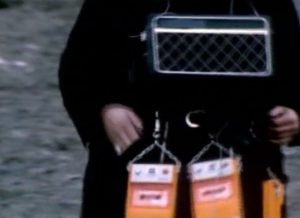Yesterday morning i had some time to think about how to implement our #1000tracks in an easy way online.
My first idea was to do the administration of files online with WordPress on board tools. Realizing that its not possible to add tags to media files in a standard WordPress install i found a plugin, that allows to do that.
So the WordPress media library could be our file repository.
Currently there is an upload limit to our media library concerning the size of a single file. There is a way to bypass this (basically: upload via ftp, then pull in the files to the WordPress media lib) – but it is possible to lift the upload limit (i just have to check if it works via .htaccess, a php-ini file or maybe via the WordPress functions).
Then i had the idea, that the basic Schnitzler concept (using a cassette-player for each track) could be implemented easily in the browser: just add the audiofiles to an HTML5 audio player, one player for each file, and start playing, by pressing the play and pause buttons and increase or lower the volume. Because there is a limitation to one file that can be played at once on a site, the audiofiles have to be implemented each to an iframe. Depending on the browser you are using the player offers some nice add ons: e.g. the player, that comes with firefox is able to loop files and to switch the tempo: 0.5x, 1x, 1.25x, 1.5x, 2x
One more problem if we are using the audioplayer that is integrated to the browser: after loading the site all players start to play immediatley.
I think there should exist a javascript based audioplayer, that offers more possibilities across platforms: e.g. to stop the player onLoad, to loop automatically, to switch tempo and maybe more … If we decide to go this way i’ll do some research. This could be a good one: https://howlerjs.com/.
The process of creating the single player pages – which then are put together in a site with iframes – sureley can be setup so that this can be done in an easy and comfortable way.
Vision for the future: soundsets (a subset of the 1000 tracks) can be generated and stored to a website; to do a concert all you need is a device, that is able to open websites (e.g. a smartphone) and a (fast) internet connection; #1000tracks concerts can be done all around the world; everybody can be the musician …
Here http://www.elektrodomestika.net/1000-tracks/ i prepared a very basic example. Maybe you want to lower the volume when checking the example, because all audioplayers start playing together 😉


